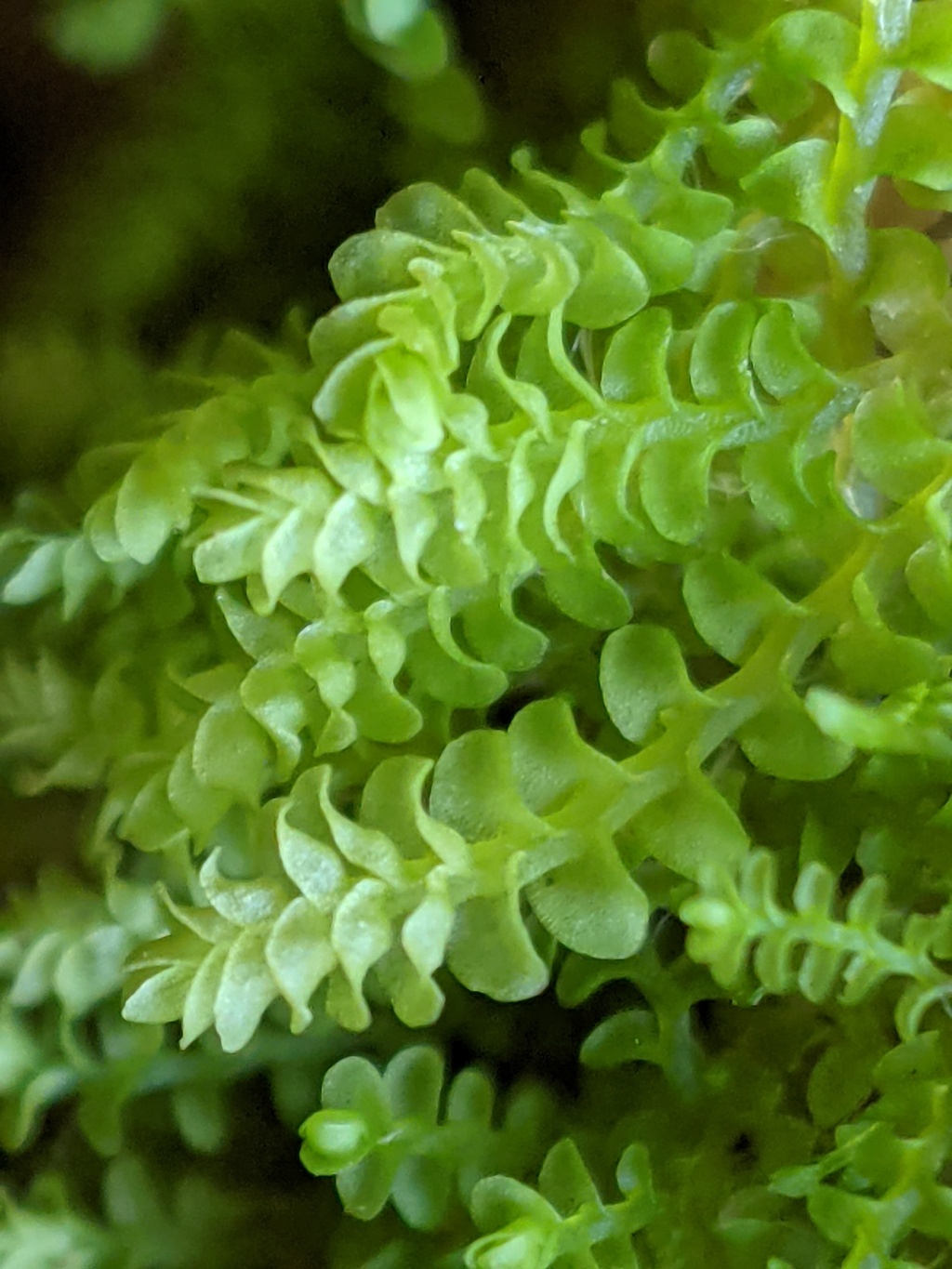Solenostomataceae
Terrestrial or lithophytic, paroicous (not in Victoria) or dioicous. Specialised asexual propagules absent. Stems prostrate, erect or ascending, simple or sparingly branched from older parts of the stem, with two ranks of lateral leaves, sometimes with only reduced leaves when prostrate, rarely with longitudinal lamellae (not in Victoria); branches emerging from main stem in axil of unmodified lateral leaf or rarely from abaxial stem (not in Victoria) and with a collar of tissue at base, rarely branches emerging abaxial to narrower lateral leaves and without a collar of tissue at base. Leaves orbicular, ovate, oblong (not in Victoria) or broadly elliptic, unlobed, alternate, succubous to transverse in insertion and orientation, remote to imbricate, usually decurrent, entire, unistratose or bistratose (not in Victoria), with plane, recurved or revolute (not in Victoria) margins, with rounded apices. Underleaves rarely present (not in Victoria), small and triangular or comprising 2–4 cilia. Leaf cells polygonal to oblong, smooth to papillose, thin-walled, with small or distinct trigones, rarely without trigones (not in Victoria), sometimes evenly thick-walled at margins (not in Victoria), with 1–12 oil bodies; oil bodies fusiform, ellipsoid or spherical, finely granular to granular-botryoidal. Rhizoids scattered along abaxial stem, fascicled near leaf bases (not in Victoria), or sometimes also from abaxial surface of leaf bases (not in Victoria) or perianth (not in Victoria), colourless, brownish, red or purplish, without internal peg-like thickenings. Androecia terminal or becoming intercalary, with 2–12 pairs of leaf-like but more ventricose bracts, each with 1–3 antheridia. Sporophyte terminal on leading axes, surrounded by bracts and perianth; bracts in 2–3 pairs, subtending perianth; perianth pyriform, obovoid, fusiform or cylindric, irregularly 4–6-plicate toward mouth, crenulate or entire (not in Victoria) and sometimes beaked at mouth, rarely widest and bilabiate at mouth (not in Victoria), emergent from bracts or immersed within them (not in Victoria), at apex of perigynium or perigynium absent; perigynium when present ring-like or tubular (not in Victoria). Capsule spherical to ovoid, 2–5-stratose, dehiscing by 4 valves; elaters bispiral, rarely trispiral (not in Victoria); spores globose, granulate to papillate or verruculose.
Worldwide except Antarctica, with five genera and 145 species (Schuster 2002; Söderström et al. 2016); one genus and two species in Victoria.
Schuster, R.M. (2002). Austral Hepaticae Part II. Nova Hedwigia Beiheft 119. Cramer in der Gebrüder Borntraeger Verlagsbuchbehandlung: Berling & Stuttgart.
Söderström, L., Hagborg, A., von Konrat, M., Bartholomew-Began, S., Bell, D., Briscoe, L., Brown, E., Cargill, D.C., Costa, D.P., Crandall-Stotler, B.J., Cooper, E.D., Dauphin, G., Engel, J.J., Feldberg, K., Glenny, D., Gradstein, S.R., He, X., Heinrichs, J., Hentschel, J., Ilkiu-Borges, A.L., Katagiri, T., Konstantinova, N.A., Larraín, J., Long, D.G., Nebel, M., Pócs, T., Puche, F., Reiner-Drehwald, E., Renner, M.A.M., Sass-Gyarmati, A., Schäfer-Verwimp, A., Moragues, J.S., Stotler, R.E., Sukkharak, P., Thiers, B.M., Uribe, J., Váňa, J., Villarreal, J.C., Wigginton, M., Zhang, L. & Zhu, R. (2016). World checklist of hornworts and liverworts. Phytokeys 59: 1–828.
 Spinning
Spinning